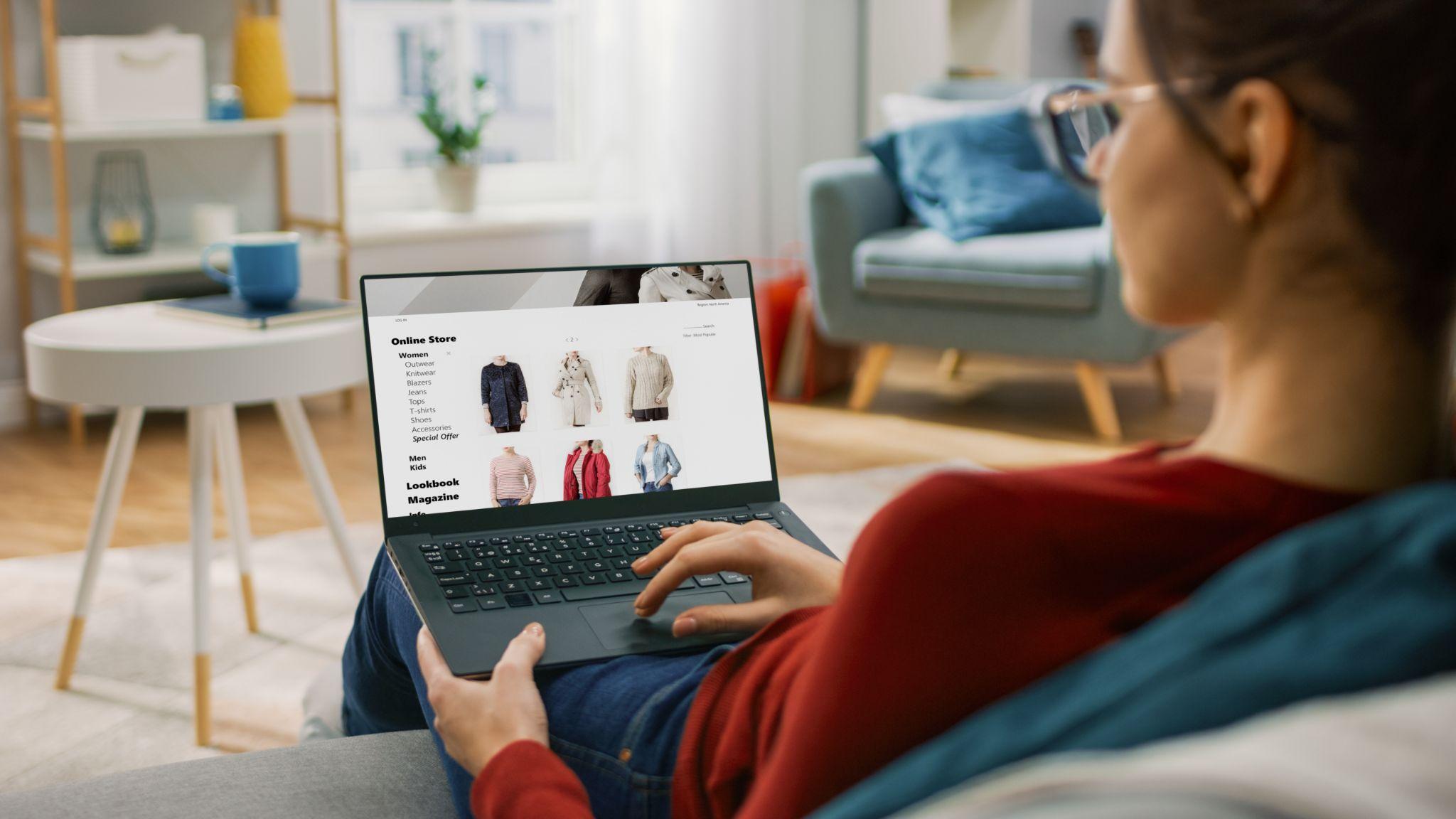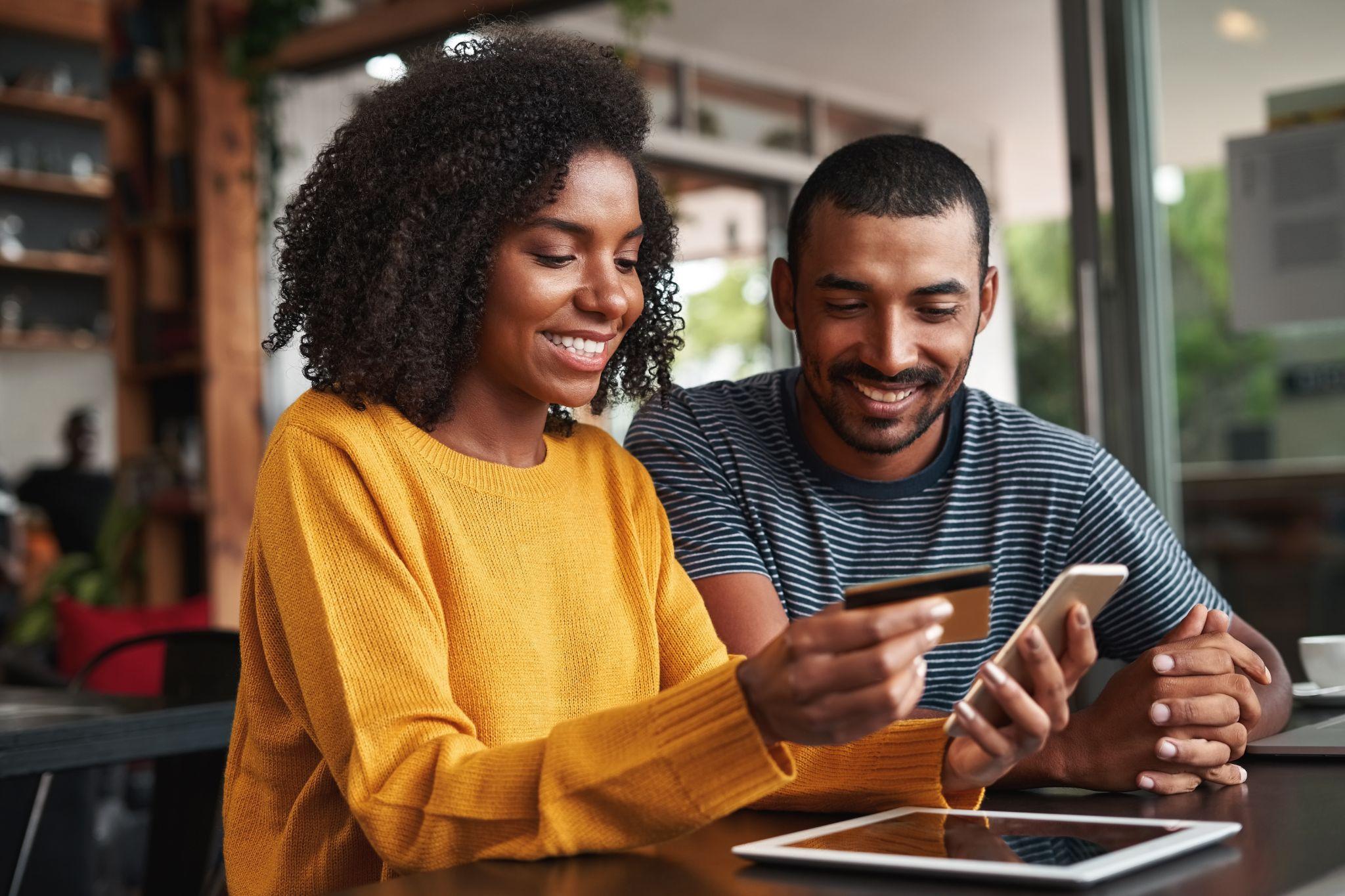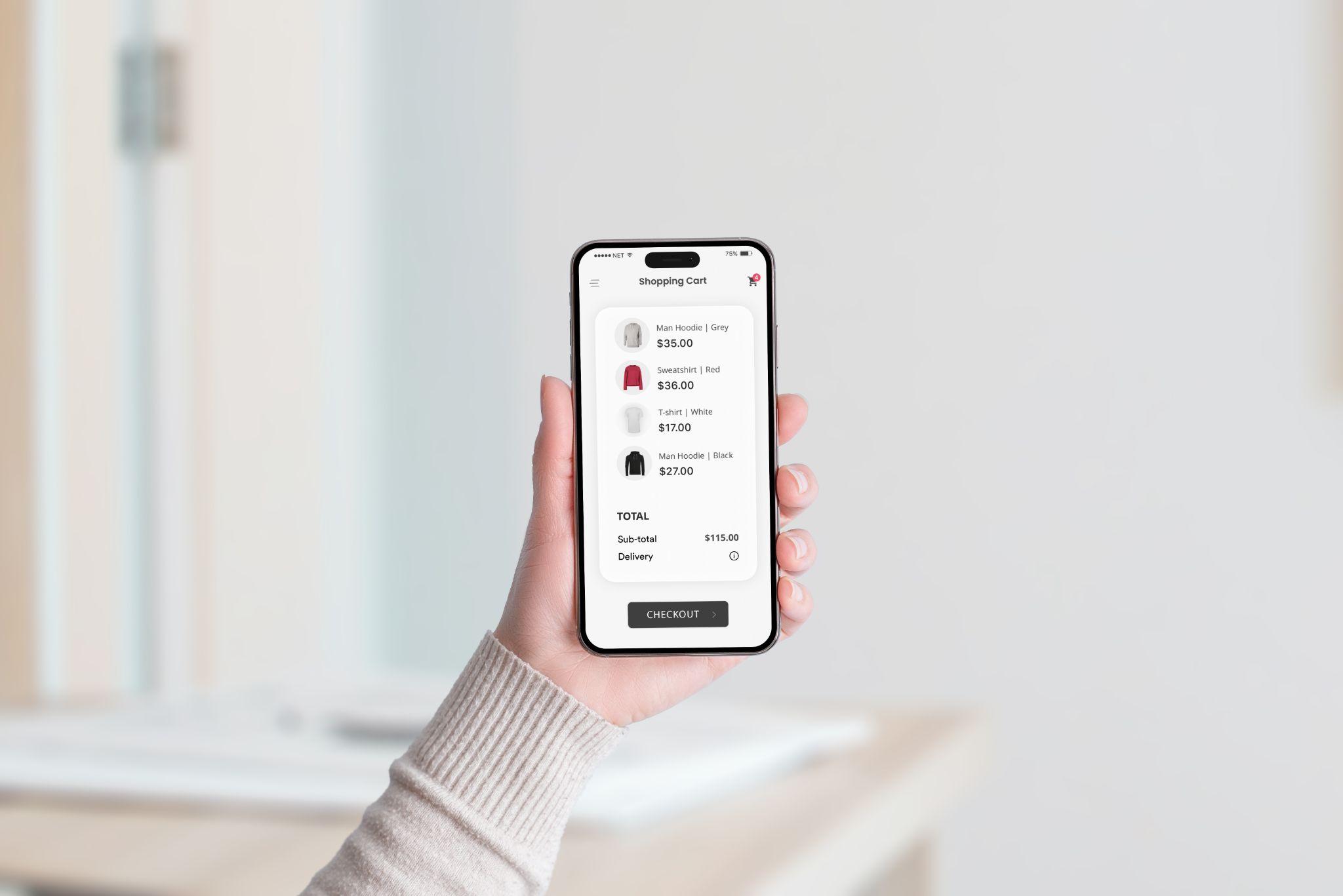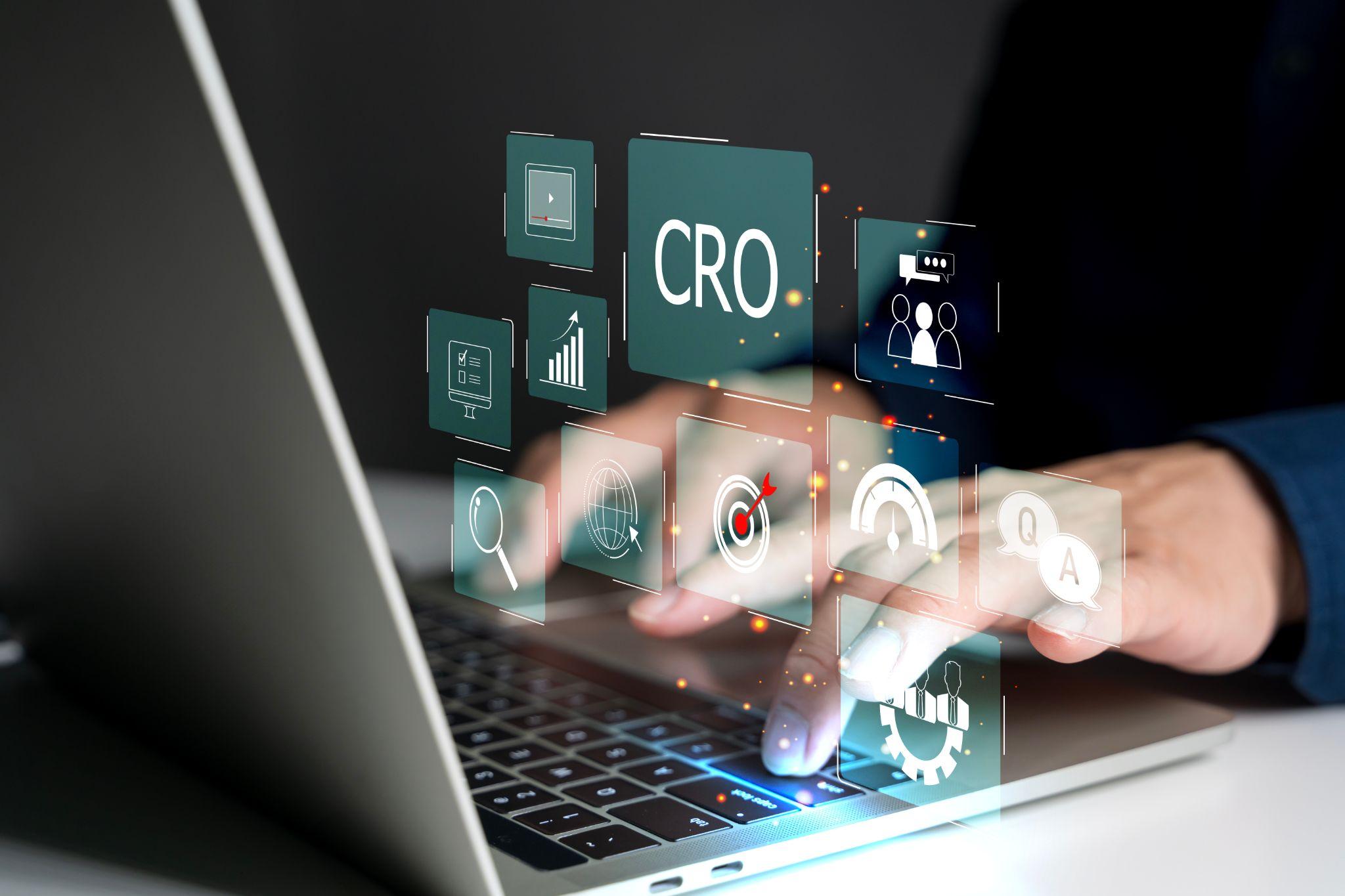
Getting people to your website is just one part of the equation. What happens after they arrive is what really determines your success. No matter if you’re running paid ads, growing through organic traffic, or building a social presence, all of it ultimately comes down to this: Are visitors taking action?
Conversion rate optimization (CRO) is the process of turning more of your existing traffic into paying customers. It helps you increase sales, generate more leads, and reduce your cost per acquisition, all without spending more on driving traffic.
Whether you’re not seeing the conversions you hoped for or you’re simply looking to improve efficiency and scale profitably, CRO is one of the most effective ways to grow. In the sections ahead, we’ll walk you through how CRO works, why it matters, and how partnering with a digital marketing agency can help you get better results.
To understand CRO, you first need the answer to the question: What is conversion rate? Put simply, your conversion rate is the percentage of visitors who take a specific action on your website, like making a purchase, signing up for a newsletter, filling out a contact form, or booking a demo. It’s a key metric that tells you how effectively your site turns traffic into real business results.
Conversion rate optimization (CRO) is about improving your website so more of your visitors take those actions. Instead of just focusing on getting more traffic, CRO helps you make the most of the traffic you already have. That means analyzing user behavior, testing different design elements or messaging, and removing friction from the customer journey.
For example, a faster checkout process could help an ecommerce brand reduce cart abandonment. A clearer headline or stronger call-to-action could increase lead submissions for a service business. In every case, CRO helps you get more value from your marketing efforts—without increasing your spend.
If you want to know how to increase conversion rate, it’s all about smart, strategic planning.
Calculating your conversion rate is simple. Just divide the number of conversions by the number of visitors, then multiply by 100 to get a percentage.
Conversion Rate = (Conversions ÷ Total Visitors) × 100
For example, if 500 people visit your website and 25 of them make a purchase, your conversion rate is:
(25 ÷ 500) × 100 = 5%
You can apply this formula to any goal—purchases, form fills, downloads, sign-ups—whatever action matters most to your business. Tracking this metric regularly helps you measure the impact of your optimization efforts over time.

For most ecommerce businesses, a conversion rate between 2.5% and 3% is considered average. But “good” is relative—it depends on your industry, product type, traffic sources, and even the devices your customers use. Some high-performing stores see rates of 5% or more, while others may struggle to hit 1%.
Several factors influence your conversion rate. Price point is a big one. Lower-cost items often convert at higher rates because they require less consideration. Traffic quality matters too. Someone who found you through a branded search is more likely to convert than someone who clicked a generic display ad.
Other key variables include site speed, mobile usability, product photography, customer reviews, and even your return policy. So, while benchmarks are helpful, the real goal is improving your own baseline. If you’re converting at 1.8%, getting to 3% could mean a major jump in revenue, without spending a dollar more on ads.
Improving your conversion rate doesn’t always require a complete website overhaul. Sometimes, small changes can lead to big results. No matter if you’re focused on how to increase website conversions or you want to improve conversion rate on product pages, the key is to make data-driven decisions that enhance the user experience and guide visitors toward action.
Here are 15 proven ways to increase your store conversion rate and turn more traffic into sales.
If your website isn’t mobile-friendly, you’re leaving money on the table. More than half of ecommerce traffic now comes from mobile devices. Mobile-first design is a core part of CRO best practices.
Mobile optimization means more than just having a responsive design. It’s about fast loading times, easy navigation, thumb-friendly buttons, and clean layouts. Think about the mobile checkout process: Can someone complete a purchase with one hand? Is your font readable on a small screen? If not, you’re likely missing out on conversions.
A customer browsing your site on their phone might love your products, but if your “Add to Cart” button is hard to find or your images take too long to load, they may leave and never come back. Don’t let that happen. Invest in making your site friendly for mobile users.
A/B testing is one of the most powerful tools in the conversion rate optimization (CRO) toolbox. It lets you compare two versions of a page element—like a headline, CTA button, or image—to see which performs better with your audience.
For example, you might test two versions of a product description: one focused on emotional appeal, the other on technical features. If version A converts at 4.2% and version B only hits 2.8%, you have clear direction on what messaging resonates most. The beauty of A/B testing is that it takes the guesswork out of optimization.
When conducting A/B tests, focus on elements that directly affect your user journey. Your goal is to increase sales conversion, not just shuffle design elements around.
If you’re serious about website conversion rate optimization, a CRO planner is your best friend. It helps you organize ideas, prioritize tests, and track performance over time. Think of it as your roadmap for structured, ongoing improvement.
Start by identifying friction points in your funnel. Maybe users are dropping off on the product page or carts are being abandoned at checkout. Once you pinpoint issues, your planner can help you map out hypotheses, testing strategies, and expected outcomes.
By using a planner, you’re not just guessing how to improve the conversion rate on your website, you’re creating a documented, repeatable process. This is especially helpful for teams or agencies managing multiple campaigns at once.

Understanding how users behave on your site is critical to knowing where to optimize. Tools like Hotjar, Crazy Egg, or Google Analytics 4 give you heatmaps, click maps, and session recordings to see exactly how visitors navigate your site.
The insights you glean by tracking how people interact with your site can reveal usability issues and highlight opportunities to improve the conversion rate across different pages. For example, if a heatmap shows users are hovering over product images but not clicking “Add to Cart,” you might need to move your button higher on the page or make it more visually prominent.
Tracking user behavior is foundational to smart conversion rate optimization strategies, so incorporate it into your CRO plan.
High-quality product photography builds trust and drives conversions. Shoppers can’t touch or try on your products, so your photos need to do the heavy lifting. Clear, well-lit images from multiple angles help eliminate uncertainty and increase buyer confidence.
Give users every reason to fall in love with your product. Include zoomed-in views, lifestyle shots, and videos where possible. If you’re selling something wearable, like clothing or a fitness watch, show the item on different body types. If you’re selling home goods, demonstrate size and scale within a room.
The goal is to help your customer to visualize ownership. This emotional connection can be the difference between browsing and buying. It’s a powerful lever for how to increase sales conversion.
Slow page loading is a silent conversion killer. If your site takes more than a few seconds to load, people will leave, especially on mobile. Google research shows that a delay of just one second can reduce conversions by up to 20%.
Use tools like Google PageSpeed Insights or GTmetrix to test your load times. Common issues include oversized images, unused JavaScript, and slow third-party apps. Fixing these can significantly improve the user experience.
Fast websites don’t just perform better, they convert better. If you’re looking for a quick win in CRO for ecommerce, speeding up your site is a great place to start.
When it comes to how to increase conversion rate, your offers can play a bigger role than you might think. Even small tweaks—like changing “Free Shipping Over $50” to “Free Shipping Today Only”—can create a sense of urgency and boost results.
Try testing bundles, limited-time discounts, or exclusive member perks. A skincare brand, for example, might test “Buy One, Get One 50% Off” versus a flat “20% Off All Products” and see which drives higher cart values and conversions.
The key is to continually refine your value proposition. What gets people to act? The right offer delivered at the right time can seriously increase your store conversion rate.
Conversion rate optimization doesn’t end at the desktop, so think beyond your website. Mobile marketing strategies like SMS campaigns, push notifications, and in-app offers can re-engage users and drive conversions.
Let’s say you run a subscription box service, and a customer adds a product to their cart but doesn’t check out. You send a personalized SMS reminder with a 10% discount, and they complete the purchase from their phone. That’s smart mobile CRO in action.
Creative mobile tactics keep your brand top of mind and help bridge the gap between browsing and buying, especially when combined with a mobile-optimized site experience.
Uncertainty around shipping and returns is a major reason people abandon their carts. Make that information easy to find, especially if your policies are generous. A well-placed footer section with clear details can go a long way in getting people to convert.
Let’s say you offer free returns within 30 days and 2-day shipping on orders over $75. Don’t hide that info in an FAQ page. Call it out clearly in the footer, on product pages, and even during checkout.
Transparent policies reduce hesitation and improve the conversion rate by addressing common concerns upfront. In ecommerce, trust drives action, so remove the guesswork for your customers.

One of the fastest ways to improve the conversion rate on your website is by making the checkout process as simple as possible. Every additional step, field, or form increases the chance someone will abandon their cart.
Use a progress bar to show users how far along they are. Offer guest checkout options. Pre-fill known fields and limit form inputs to only what’s absolutely necessary. For mobile, autofill and mobile wallets like Apple Pay can dramatically boost conversions.
If your current checkout takes five steps, try getting it down to two or three. When it’s easy to buy, people do.
People trust other people more than they trust brands. Adding reviews, testimonials, star ratings, and user-generated content can dramatically increase store conversion rate by reducing doubt and building credibility.
Place reviews near your CTAs. Highlight customer photos. Add trust badges for secure payments. For example, a new visitor landing on your product page may hesitate—until they see 4.8 stars from 500 happy customers.
Social proof taps into a psychological principle known as “herd behavior.” If others have had a great experience, new visitors are more likely to follow suit.
Exit-intent popups trigger when a user is about to leave your site. It’s your last chance to grab their attention and turn a bounce into a conversion.
You could offer a discount, a free shipping code, or even a limited-time offer like “Hold on—want 15% off before you go?” This can be especially effective for first-time visitors or those who have items in their cart.
Just be careful not to overdo it. Bad popups can feel spammy. Keep it simple, relevant, and aligned with your brand.
Personalization is a powerful way to improve conversion rate by showing users what’s most relevant to them. This can mean personalized product recommendations, dynamic homepage content, or cart reminders tailored to past behavior.
Suppose a returning customer views running shoes. Instead of showing generic products, highlight your latest running gear or styles similar to their previous purchase. The more relevant the experience, the more likely they are to convert.
Tools like Klaviyo, Nosto, and Shopify apps make personalization scalable—even for small teams.
Landing pages serve a specific purpose—whether it’s promoting a product, capturing leads, or announcing a sale. The best ones are focused, distraction-free, and built around a single call to action.
If you’re running a paid campaign, sending traffic to your homepage is a missed opportunity. Instead, build a custom landing page that matches the ad’s message, includes social proof, and eliminates navigation that can pull visitors off track.
If you want to know how to increase conversion rate from ads and social media campaigns, it starts with good landing pages.
People don’t convert when they’re confused or unsure if they can trust you. That’s why clear messaging and brand consistency are essential parts of conversion rate optimization strategies. When your voice, visuals, and value proposition are aligned across every page and platform, you reduce hesitation and build confidence.
Make sure your branding is visually consistent. Logos, fonts, colors, and tone should feel cohesive across your site and marketing materials. This builds familiarity and trust, which directly contributes to a higher website conversion rate. When visitors know who you are and why you’re different, they’re far more likely to take the next step.

Cart abandonment is one of the biggest challenges in ecommerce—but also one of the biggest opportunities. With the right strategy, you can recover lost sales and increase conversion rate without driving more traffic. Here are a few proven ways to convert abandoned carts:
Recovering abandoned carts is one of the most effective ways to boost sales and improve your conversion rate, and it’s often easier than you think.
A strong omnichannel marketing strategy ensures that your brand shows up consistently across every platform your audience uses—whether it’s your website, social media, email, SMS, or even paid ads.
When done right, omnichannel marketing is a key strategy for how to increase conversion rate. It’s all about delivering a seamless and personalized customer experience from first touch to final purchase.
Here’s how it works: Imagine someone sees your product on Instagram. They click through to your site but don’t buy. Later, they get retargeted with a Facebook ad offering 10% off. Then, they receive an abandoned cart email with product reviews and a reminder that shipping is free. Each interaction is a reminder of your product, nudging them closer to conversion.
Omnichannel strategies are especially effective in ecommerce, where buying decisions often span multiple channels. A customer might discover you through a TikTok video, research on your website, read reviews in an email, and finally convert through a Google Shopping ad. If all those touchpoints are aligned with the same messaging, branding, and offers, you’re far more likely to convert that customer.
This approach also supports website conversion rate optimization by guiding users through a consistent, optimized path to purchase, regardless of where they enter the funnel. Whether it’s promoting flash sales via SMS, using dynamic retargeting ads, or leveraging user-generated content in emails, omnichannel tactics ensure you’re always meeting customers where they are.
Ultimately, the more integrated and customer-centric your marketing efforts are, the better your chances of increasing your store conversion rate. An omnichannel strategy turns disconnected efforts into a cohesive, high-performing system designed to convert.

Socialfly helps brands boost their conversion rates through the creative and strategic elements that drive people to act.
Our services work hand-in-hand with technical CRO efforts to create a seamless, high-performing customer journey. From the first ad a user sees to the content they engage with on your social channels, everything we create is built to support conversions.
Here’s how we contribute to a powerful conversion-focused marketing strategy:
When your creatives, content, and paid strategies align with technical CRO efforts, you get better results. More leads, more sales, and more value from your marketing.
Get in touch to find out how our team can create a holistic marketing plan to boost conversions for your brand.
A conversion is any desired action a user takes on your site. It could be making a purchase, signing up for a newsletter, filling out a form, or downloading a resource. It’s the moment when a visitor becomes a lead or a customer.
Conversion rate optimization helps you get more value from the traffic you already have. Instead of spending more on ads or promotions, it focuses on turning more of your current visitors into customers. This means higher ROI, lower acquisition costs, and better performance across your marketing channels.
To boost CRO for ecommerce, start by improving mobile usability, page speed, and product visuals. Use trust signals like reviews and clear return policies, and simplify your checkout process. If you’re struggling to figure out how to increase conversion rate, optimizing your site can reduce friction throughout the buyer’s journey, making them more likely to convert.
Some top CRO best practices include:
If you’re focused on how to increase conversion rate, consistency and data-driven decisions are key. When your creative and technical strategies work together, you’ll get better results.
Creating a smart conversion strategy starts with understanding your users, identifying friction points, and testing solutions. Partner with a marketing agency like Socialfly to streamline this process.
An experienced agency brings creative strategy, content, and campaign planning needed to support your conversion rate optimization efforts and ensure your efforts are aligned with your overall business goals.